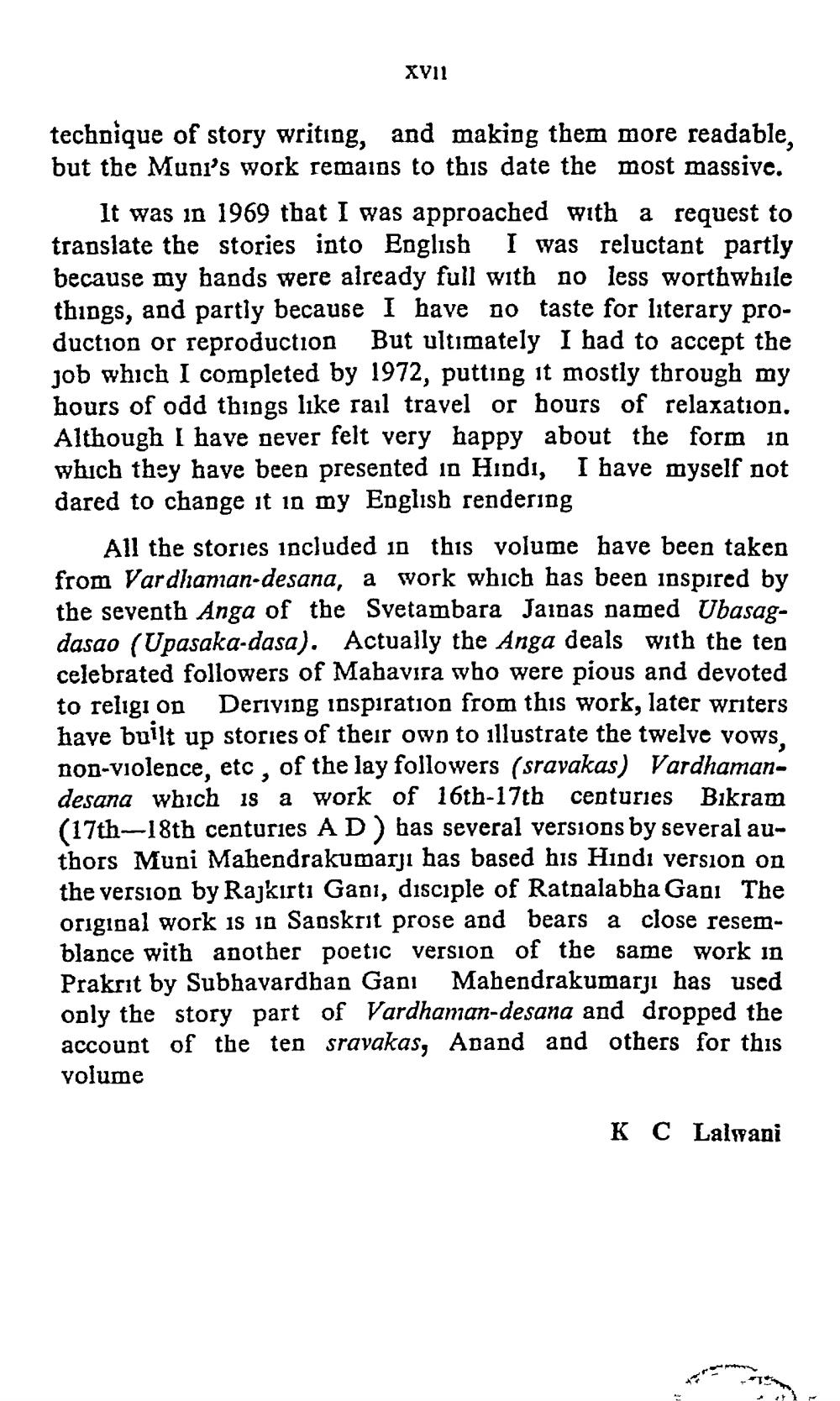________________
XVII
technique of story writing, and making them more readable, but the Muni's work remains to this date the most massive.
It was in 1969 that I was approached with a request to translate the stories into English I was reluctant partly because my hands were already full with no less worthwhile things, and partly because I have no taste for literary production or reproduction But ultimately I had to accept the job which I completed by 1972, putting it mostly through my hours of odd things like rail travel or hours of relaxation. Although I have never felt very happy about the form in which they have been presented in Hindi, I have myself not dared to change it in my English rendering
All the stories included in this volume have been taken from Vardhaman-desana, a work which has been inspired by the seventh Anga of the Syetambara Jainas named Ubasagdasao (Upasaka-dasa). Actually the Anga deals with the ten celebrated followers of Mahavira who were pious and devoted to religi on Deriying inspiration from this work, later writers have built up stories of their own to illustrate the twelve vows, non-violence, etc, of the lay followers (sravakas) Vardhamandesana which is a work of 16th-17th centuries Bikram (17th-18th centuries AD has several versions by several authors Muni Mahendrakumarji has based his Hindi version on the version by Rajkırtı Gani, disciple of Ratnalabha Gani The original work is in Saoskrit prose and bears a close resemblance with another poetic version of the same work in Prakrit by Subhavardhan Gani Mahendrakumarji has used oply the story part of Vardhaman-desana and dropped the account of the ten sravakas, Aband and others for this volume
K
C Lalwani




